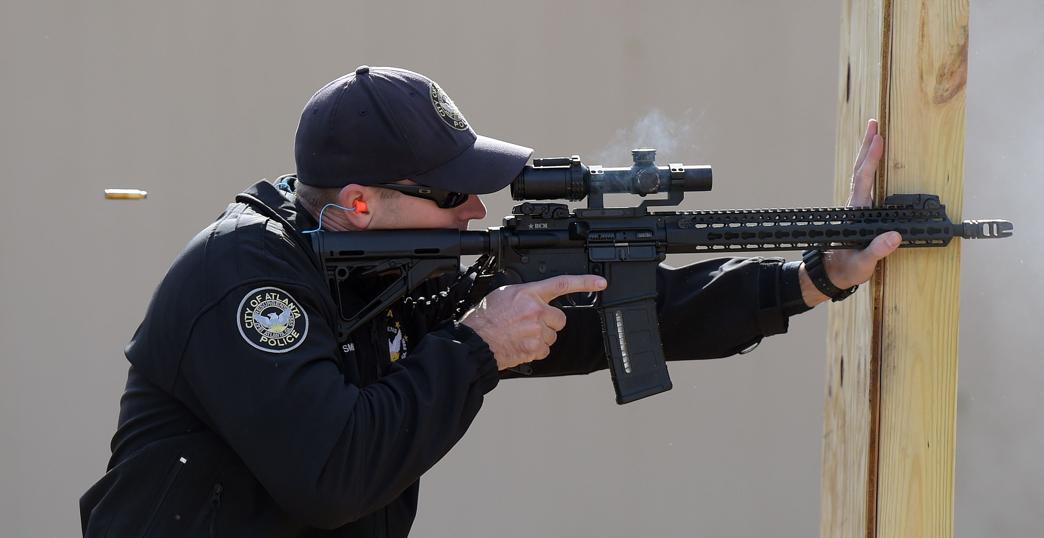
The state of Georgia is on pace to double the number of fatal police shootings in 2018. The Atlanta Journal-Constitution (AJC) reported that records show 30 people were shot and killed by police in Georgia in 2017. It is July 2018 and Georgia has already nearly matched that number.
However, the number of fatal police shootings so far in 2018 as compared to 2017 is not only higher in Georgia. Nationally, the number has risen as well. The Washington Post maintains a 2018 police shooting database which provides insight into the number of fatal shootings.
As of Aug. 6, 613 people have been shot and killed by police in the U.S. for the year of 2018. There have been 11 more fatal shootings now than there were this same time last year. Of those 613, 4.8 percent were killed in Georgia.
“We are at an epidemic proportion of deadly police encounters with civilians,” Attorney Gerald Griggs said. Griggs is a member of the National Association for the Advancement of Colored People (NAACP), the second vice president of the Atlanta NAACP chapter and the leader of the criminal justice committee.
“It is definitely time to embrace the findings of the Obama 21st Century Policing Initiative,” Griggs said. The Initiative provided causes and 92 recommended solutions on policing practices based on six different pillars, which included technology, training and officer safety.
“I think the very root cause is the disconnect between the officers and the community. They rarely get out of their car to engage with community members. They are just responding call to call so there’s no real connection,” he said.
Under the direction of Chief of Police Joseph Spillane, the Georgia State University Police Department has prioritized community engagement in the way Griggs has described.
“We are trying to transition from being in patrol cars to being in golf carts,” Spillane said in June. “We also just put six new motorcycles on the streets. We’re trying to be a little more proactive and interactive with students by being on motorcycles, bicycles, segways and on foot instead of in those police cars.”
Spillane has taken steps to work alongside the Atlanta Police Department to bring together Georgia State students and non-students in the downtown area for a safer environment.
Grigg’s solution to policing issues comes twofold: “One, a move back to community oriented policing and two, more emphasis on prosecuting officers that violate the communities’ trust, especially when it deals with the use of lethal force.”
While 2018 is only halfway over, Mapping Police Violence (MPV) can show us what numbers we may surpass by the end of the year.
Compared to the AJC and Washington Post’s data, MPV analyzes state and national averages only in the year 2017. MPV also includes those killed by police with guns and by other methods. These methods can include deaths caused by being chased, beaten, restrained, pepper sprayed or tased.
According to data from The Washington Post, 987 people were shot and killed by police in 2017. However, MPV data brings the total to 1,147 when including those killed by firearms and other methods.
Of the 1,147 killed, black people made up 25 percent of the deaths despite being only 13 percent of the population. The MPV website states that black people are three times as likely to be killed by police than white people. This data illustrates a disproportionate amount of police violence towards the African-American population.
The data also shows it’s not only about the crime of the victim. Of the deaths reported, 30 percent of black victims were unarmed, compared to 21 percent of white victims. Additionally, fewer than one in three black victims were the suspect of a violent crime and armed with a weapon.
Griggs also finds that the decision in Tenessee v. Garner provides excessive power to police.
“There is the very sovereign immunity that many police departments have with the lethal use of force doctrine that was given by SCOTUS,” he said. “The decision is that if the officer is in ‘reasonable fear’ they can use deadly force. Well, we have never defined what reasonable fear is. If we don’t define this, we will have an epidemic because there is no standard.”
For Griggs, the community needs more than just one change.
“There is a need to address the systemic issues that are causing people to become entwined in the criminal justice system, poor school funding and lack of economic opportunity,” he said.
